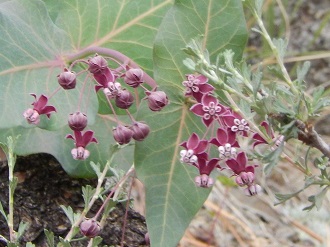
|
|||||||
|
|||||||

|
- Host plants—also called larval plants—are annuals or perennials where butterflies lay their eggs. As the tiny caterpillars hatch from the eggs they will consume the leaves and often the flowers as food. While hungry caterpillars can quickly defoliate a plant, new leaves quickly grow afterwards. You can enjoy watching the entire life span of butterflies in your yard by including host plants. Plus more butterflies will often linger in your yard looking for a mate or to find just the right place to lay their eggs. To qualify as a Monarch Waystation, plant at least ten milkweeds (Asclepias spp.) and include other host plants to draw a variety of other butterflies to your garden.
- Nectar plants—All butterflies need nectar to sustain their adult life but not all flowers are created equal. Butterflies have favorites and they can vary by the season, but butterflies will visit them in the spring, but late summer and fall are the premier seasons. To attract a wide variety of visitors, make sure there are flowering plants in your garden throughout the entire butterfly season. Clusters of several plants are most effective and visible to flying butterflies.
- Shelter—Butterflies need trees or large shrubs for protection from the wind and heat of the day as well as a place spend the night. When the weather is favorable, look for them on the southeast side of trees and tall bushes warming in the rising sun.
- Moisture—In dry conditions (low humidity and low rainfall), monarchs may benefit from supplemental moisture. This can be as simple as irrigating deeply when they are present. You may see monarchs sipping from morning dew or moisture on leaves or puddling on damp ground.

|
Another consideration is irrigation. Even native plants will need supplemental moisture until they are well-established, usually at least two years. Many butterfly gardens benefit from drip irrigation or occasional deep watering during dry spells. Be sure to plan for your watering needs before you plant.
When considering using insecticides, remember that monarchs are insects! Don't use them!
Consider registering your butterfly garden as a Monarch Waystation to inspire others!
Regional Planting Guides
Much of the information about planting monarch waystations is geared towards the eastern part of the United States. Because different species of milkweeds grow in the southwest, our goal is to work with native plant societies, master gardeners, naturalists, government agencies and the public to create publications for various growing zones within each state. Look here for additional publications in the future. If you would like to help create a publication for your location, please contact us.
For planting guides, download one of our publications for your area (PDF reader needed). All of these resources include both native and common garden ornamentals favored by monarchs. We encourage you to always include native plants, since they flourish in our harsh weather extremes best.
Arizona
|
|
- Lower deserts Low Desert Monarch Waystations and Butterfly Gardens
- Middle elevations Middle Elevation Monarch Waystations and Butterfly Gardens

Heartleaf Milkweed (Asclepias cordifolia) near Genoa, NV |
|
Unless specified otherwise, all data Copyright © 2010-2021 Southwest Monarch Study Inc. Information from this site may not be copied or distributed without prior written approval from Southwest Monarch Study |
|
Webdesign Copyright © 2010-2020 Southwest Monarch Study Inc. |


